
Sylhet Division is the northeastern division of Bangladesh. It is bordered by the Indian states of Meghalaya, Assam and Tripura to the north, east and south respectively, and by the Bangladeshi divisions of Chittagong to the southwest and Dhaka and Mymensingh to the west. Prior to the Partition in 1947, it included Karimganj subdivision. However, Karimganj was inexplicably severed from Sylhet by the Radcliffe Boundary Commission. According to Niharranjan Ray, it was partly due to a plea from a delegation led by Abdul Matlib Mazumdar.
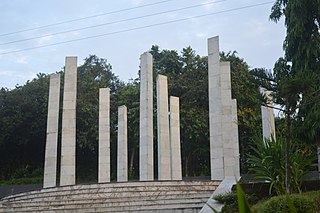
Cachardistrict is an administrative district in the state of Assam in India. After independence, the pre-existing undivided Cachar district was split into four districts: Dima Hasao, Hailakandi, Karimganj, and the current Cachar district. Silchar is Cachar district's center of government.

Hailakandi district is one of the 33 districts of Assam state in north-eastern India. It makes up the Barak Valley alongside Cachar and Karimganj. It was constituted as a civil subdivision on 1 June 1869. Subsequently, it was upgraded to a district in 1989, when it was split from Cachar district.

Silchar is a city and the headquarters of the Cachar district of the state of Assam, India. It is second largest city of Assam after Guwahati in terms of area, population and GDP. It is also administrative capital of Barak Valley division. It is located 343 kilometres south east of Guwahati. It was founded by Captain Thomas Fisher in 1832 when he shifted the headquarters of Cachar to Janiganj in Silchar. It earned the moniker "Island of Peace" from Indira Gandhi, the then Prime Minister of India. Silchar is the site of the world's first polo club and the first competitive polo match. In 1985, an Air India flight from Kolkata to Silchar became the world's first all-women crew flight. Silchar was a tea town and Cachar club was the meeting point for tea planters.

Karimganj is a town in the Karimganj District of the Indian state of Assam. It is the administrative headquarters of the district.
Badarpur is a town and a town area committee in Karimganj district in the state of Assam, India. Badarpur. Together with adjacent Badarpur Railway Town, it forms the Badarpur Urban Area, one of two notified urban areas in the district. The area is also popularly known as "Gateway to the Barak Valley" of Assam. Badarpur was a part of Karimganj district till 31 December 2022.
The Twipra Kingdom was a Tibeto-Burman dynasty ethnic Kingdom of the Tripuri people (Tibeto-burman) in Northeast India.

Zakiganj is an upazila of Sylhet District in Sylhet Division, Bangladesh.

The Barak Valley is the southernmost region and administrative division of the Indian state of Assam. It is named after the Barak river. The Barak valley consists of three administrative districts of Assam namely - Cachar, Karimganj, and Hailakandi. The main and largest city is Silchar, which seats the headquarter of Cachar district and also serves as administrative divisional office of Barak valley division. The valley is bordered by Mizoram and Tripura to the south, Bangladesh and Meghalaya to the west and Manipur to the east respectively. Once North Cachar Hills was a part of Cachar district which became a subdivision in 1951 and eventually a separate district. On 1 July 1983, Karimganj district was curved out from the eponymous subdivision of Cachar district. In 1989 the subdivision of Hailakandi was upgraded into Hailakandi district.
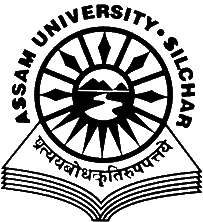
Assam University is a collegiate central public university located at Silchar, Assam, India. It was founded in the year 1994 by the provisions of an act enacted by the Parliament of India. Air Chief Marshal Arup Raha is the Chancellor, the Governor of Assam is the Chief Rector and the President of India is acting as the Visitor of the university. The university has sixteen schools which offer Humanities, Languages, Environmental Sciences, Information Sciences, Life Sciences, Physical Sciences, Social Sciences, Law, Technology and Management Studies. There are 42 departments under these sixteen schools. The five districts under the jurisdiction of Assam University have 73 undergraduate colleges as of 31 March 2020. Assam University is an institutional signatory to the Global Universities Network for Innovation (GUNI), Barcelona and United Nations Global Compact (UNGC) for its commitment to educational social responsibilities.
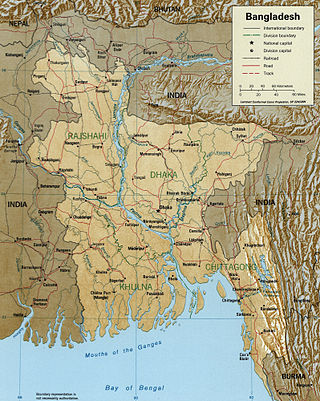
The Surma-Meghna River System is a river complex in the Indian Subcontinent, one of the three that form the Ganges Delta, the largest on earth. It rises in the Manipur Hills of northeast India as the Barak River and flows west becoming the Surma River and then flows south as the Meghna River, a total of 946 kilometres (588 mi) of which 669 kilometres (416 mi) are within Bangladesh, to the Bay of Bengal.
Ramkrishna Nagar, most commonly known as R.K Nagar, is a small municipality township situated around 47km from Karimganj, India. The topography of the area comprises undulating hillocks. It is well connected by bus service from Karimganj and shared taxis run by private operators.
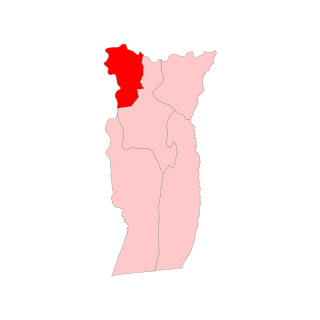
Karimganj North Assembly constituency is one of the 126 constituencies of the Assam Legislative Assembly.

Badarpur Assembly constituency is one of the 126 constituencies of the Legislative Assembly of Assam state in northeastern India.
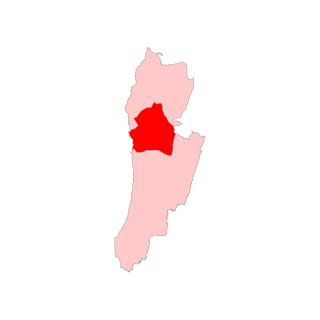
Hailakandi Assembly constituency is one of the 126 constituencies of the Legislative Assembly of Assam state in northeastern India.
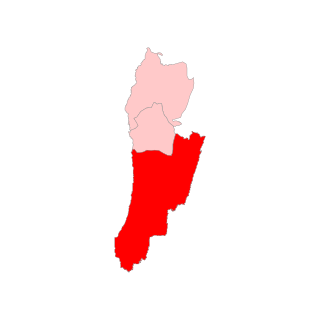
Katlicherra Assembly constituency is one of the 126 constituencies of the Legislative Assembly of Assam state in northeastern India.

The Pratapgarh Kingdom was a medieval state in the north-east of the Indian subcontinent. Composed of the present-day Indian district of Karimganj, as well as parts of Tripura State and Sylhet, Bangladesh, the kingdom was ruled by a line of Muslim monarchs over a mixed population of Hindu and Islamic adherents. It was bordered by the larger kingdoms of Kachar, Tripura and Bengal.

Mirza Agha Muhammad Reza Baig, also known by his followers as Pir Ferutupi, was a Mughal nobleman and Shia Sufi pir from Sylhet, of Iranian origin. He overthrew the Kachari Kingdom and revolted against the East India Company with the assistance of the local peasantry.

ʿAbdul Jalil Choudhury Badarpuri was a Bengali Deobandi Islamic scholar, teacher and politician. Born in what is now Bangladesh, Choudhury became one of the senior disciples of Hussain Ahmed Madani from Sylhet District. He relocated to Badarpur, Karimganj following the Partition of Bengal in 1947 and served as a member of the Assam Legislative Assembly for several terms. Choudhury has many contributions in Northeast India, covering Islamic and social development, and had participated in the Bengali Language Movement of the Barak Valley.

Bengali Hindus are the second-largest Hindu community just after Assamese Hindus in Assam. As per as estimation research, around 6–7.5 million Bengali Hindus live in Assam as of 2011, majority of whom live in Barak Valley and a significant population also resides in Assam's mainland Brahmaputra/Assam valley. Most Bengalis in Assamese-dominated Brahmaputra valley are immigrants from neighbouring East Bengal and Tripura, while Bengalis in Barak Valley region of Assam are mostly native. Assam host the second-largest Bengali Hindu population in India after West Bengal.























